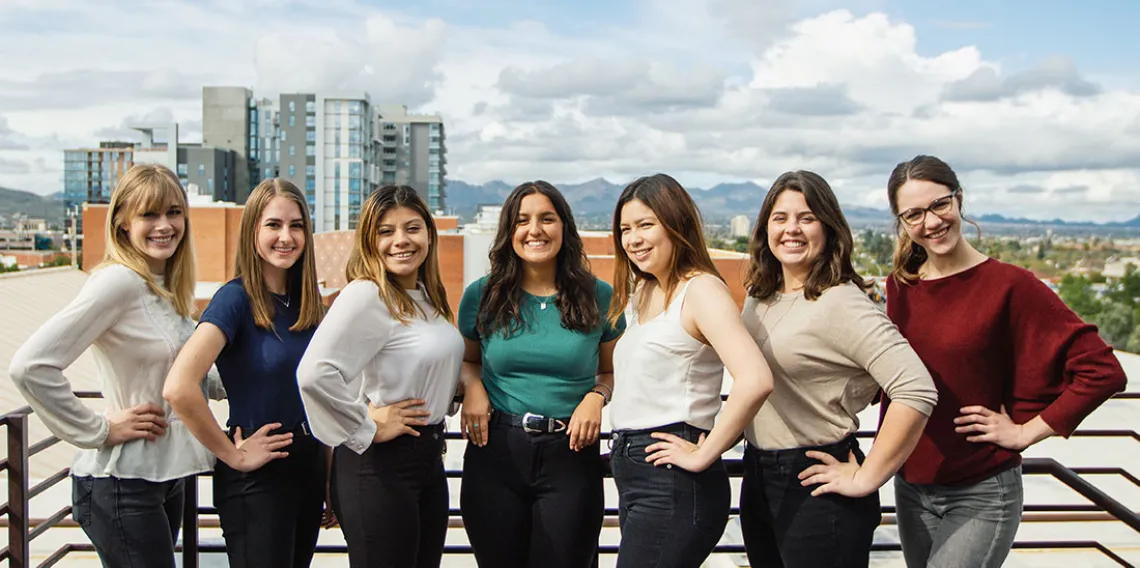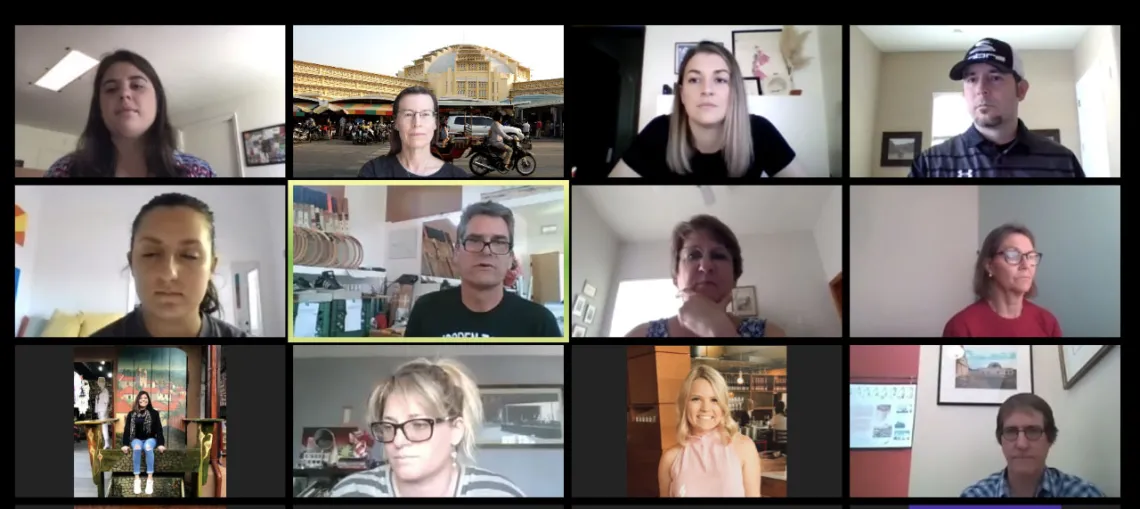Finding Hope in an Uncertain Future: CAPLA Students Host “Life After COVID-19” Virtual Career Panel

Leadership team of the University of Arizona's Women in Architecture Society: Rhiannon Mitchell, Serena Gray, Michelle Munguia, Anisa Hermosillo, Joann Thacker, Lydia Roberts and Loren Liebermann
When a panel hosted by the Women in Architecture Society (WIAS) met in April to discuss professional life after COVID-19, student attendees knew the discussion would be valuable. After all, the College of Architecture, Planning and Landscape Architecture faculty and alumni panelists have decades of design experience, including during previous recessions.
“But I didn’t expect such an inspiring message in a time when it is difficult for students to stay optimistic about being offered a job or internship in our field,” says Anisa Hermosillo ’22 B.Arch, president of WIAS and one of the event’s coordinators. “Our paths may not be as black and white as we want, but the world is at our fingertips even now—and there is unlocked potential for us to pursue.”
That doesn’t mean the panelists were unrealistic about the challenges facing students and graduates today. Rather, they shared their professional and personal life stories, suggesting a number of proven ideas for today’s job-seekers.
At the top of that list? Networking.
“As a student looking to enter the workforce, it is hopeful to hear that the diverse skills I’ve gained at CAPLA will make a real difference and that networking is the best way to get my foot in the door at many architectural firms,” says Hermosillo.

Life After COVID-19 panelists and participants.
Panelists were Emily Formentini ’08 B.Arch, a freelance artist, designer and owner of Tinimade; Associate Dean for Academic Affairs and Associate Professor of Architecture Laura Hollengreen; Associate Professor of Architectural History Lisa Schrenk, WIAS faculty advisor; Assistant Professor of Practice in Architecture Robert Vint, principal at Vint & Associates Architects; Senior Lecturer in Architecture Valerie Lane, owner of FixCity; Lecturer in Architecture Bill Mackey, principal at Worker; and Director of Alumni Relations and Community Engagement Kay Olsen Brown.
“The panelists shared their struggles of building up their architectural careers after graduating in the midst of an economic recession,” says Michelle Munguia ’24 B.Arch, AIAS secretary. “Though we are in unprecedented times, it gave us hope to hear what our professors and alumni did to survive during their recessions.”
Hermosillo agrees: “It is inspiring to see how our professors and alumni have gone through a recession and were able to find the ‘light at the end of the tunnel’—find a job doing something they enjoy.”
Questions posed by the students ranged from how the panelists marketed themselves upon graduation to how students can best handle rejection, and from the panelists’ best advice for someone seeking a job today to how they expect the field of architecture to change post-COVID-19.
“It’s good to be flexible,” says Hollengreen, “to clarify for yourself all that you can do and also what you really like to do, because during an economic downturn there is real opportunity to think outside the box. The creative thinking that students learn in our programs is put to the test and flourishes in tough times.”
In addition to networking, the panelists encouraged students to be open to the kind of work they undertake, even if not directly related to architecture. The skills learned in architecture school—such as Sketch Up, Render and Photoshop—can “help us get side jobs to get our career started or keep money flowing as we figure out our next move in life,” says Munguia.
“Although the answer to what my future holds is not yet clear, the amount of creativity being put into endeavors that build up my resume and give me insight on how the workforce operates will make me a well-rounded person when I do get out of school,” concludes Hermosillo. “And those new experiences will absolutely further my career prospects.”



